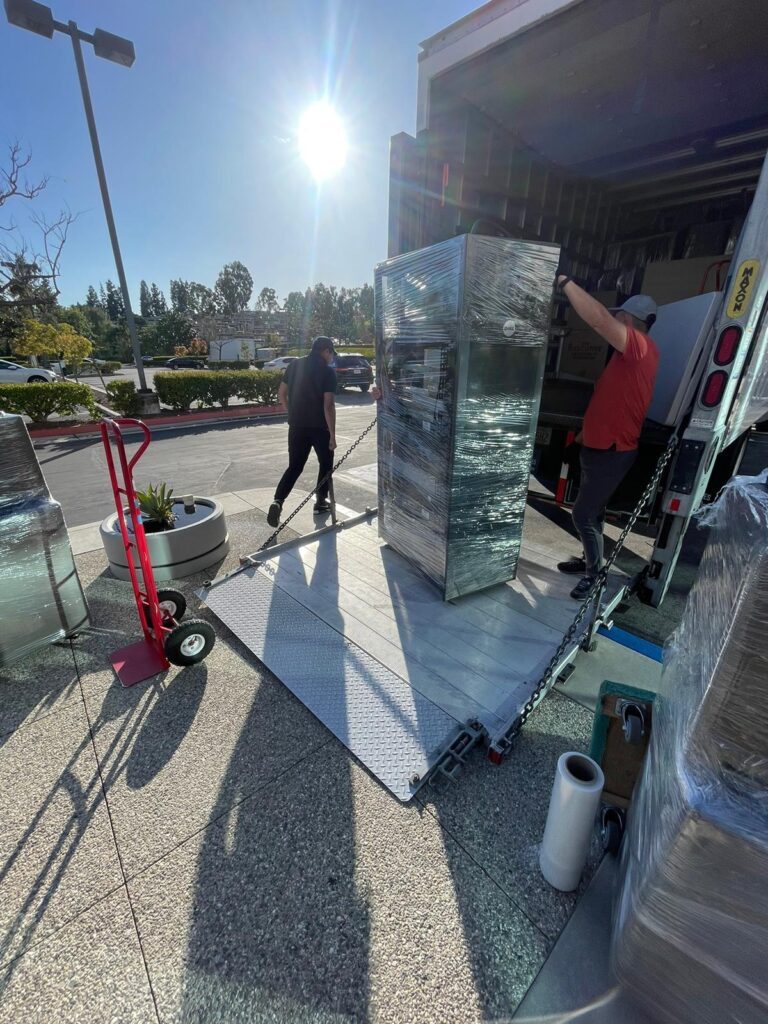Moving gym equipment poses unique challenges due to its substantial weight, bulk, and the delicate nature of certain components. Whether relocating a home gym setup or transferring commercial fitness machines, safety and thorough planning are paramount to avoid injuries and costly equipment damage. This comprehensive guide will walk you through everything you need to know—from initial measurements, disassembly, packing, and lifting techniques to transport and reassembly—helping you decide when to hire professional movers versus taking the do-it-yourself route.

Planning and Preparation
Before lifting a single weight or disassembling a machine, start with meticulous planning:
- Measure each piece of equipment’s dimensions as well as your home or facility’s doorway, hallway, stairwell, and elevator dimensions along the moving route. This critical step helps avoid surprises when maneuvering large machines like treadmills or multi-station gyms.
- Develop a layout plan for your new space. Understanding where each piece will go upon arrival streamlines the unpacking and setup process.
- Take photos of your current gym layout and complex equipment assemblies to guide reassembly later.
- Review the manufacturer’s manuals or online resources, which often have model-specific instructions for disassembly and moving.
Disassembly and Weight Removal
Reducing weight and separating components significantly simplifies the moving process. Most gym equipment comprises modular parts:
- Remove weight plates, dumbbells, and selectorized stacks to lighten machines and prevent damage during transit. For instance, a loaded squat rack can weigh hundreds of pounds more than the frame alone.
- Detach smaller components such as adjustable benches, pull-up bars, safety spotters, and cable attachments.
- Carefully label and pack small parts, bolts, and screws into labeled plastic bags.
- Photograph assembly connections to help with smooth, error-free reassembly.
Gathering Proper Tools and Materials
Equipping yourself properly is essential for efficiency and safety:
- Heavy-duty moving blankets, bubble wrap, and towels protect delicate components like LED displays, upholstery, and pedals.
- Furniture dollies and hand trucks rated for weights over 150 lbs are necessary for bulky machines such as ellipticals and stair climbers.
- Lifting straps or harnesses help distribute the weight evenly and assist in controlling awkward loads such as multi-gyms or rowing machines.
- Packing tape, permanent markers for labeling, and a basic set of tools facilitate disassembly and securing delicate parts.
Preparing Gym Equipment for Moving
Thorough preparation prevents avoidable damage:
- Power down and unplug all electronic devices. Secure cords by wrapping and taping them cleanly to machines in labeled bundles.
- Wrap consoles, pedals, hydraulic pistons, cables, and any exposed mechanical parts with protective padding.
- Use Velcro straps, bungee cords, or locking mechanisms to secure folding decks and adjustable parts.
- Clean equipment surfaces to remove sweat, oils, or dust that may cause slipping hazards during handling.
Safe Lifting and Moving Techniques
Heavy lifting is the most hazardous aspect of moving gym equipment; avoiding injury here is crucial:
- Always lift using your legs, not your back, keeping the load close to your torso.
- Communicate clearly with any helpers—agree on commands, pace, and rest points before starting.
- Dollies and lifting straps help control and stabilize equipment on flat surfaces and stairs.
- Do not move machines exceeding 50-70 lbs alone—enlist multiple strong helpers or professionals.
- Take frequent breaks to avoid fatigue, which increases injury risk.
Protecting Floors, Walls, and Pathways
Preventing damage to your home interiors is just as important as protecting your equipment:
- Place furniture sliders or mats under the feet of heavy machines to avoid dents and scratches on hardwood or tile.
- Roll equipment over low-pile carpets rather than dragging.
- Temporarily relocate rugs, clear pathways of obstacles, and protect door jambs with padding when negotiating tight spaces.
Secure Loading and Transport
Properly securing equipment during transit is critical to avoid damage and accidents:
- Place equipment upright and load in a way that balances the vehicle load weight.
- Use ratchet straps or bungee cords to secure machines to tie-down points.
- Avoid stacking heavy items on top of lighter or fragile equipment.
- Cushioned barriers between pieces reduce impact damage during sudden stops or sharp turns.
- Drive carefully and check straps during long-distance moves.
Unloading and Reassembly
When you arrive at your new location:
- Carefully unload equipment using dollies and helpers to reduce strain.
- Place equipment in assigned locations first based on your pre-move layout.
- Follow reassembly photos, labels, and manuals carefully.
- Test electronic and mechanical parts, starting with low resistance or speed settings to ensure proper functionality.
- Tighten all bolts and screws fully after reassembly.
Professional Movers vs. DIY: Making the Right Choice
Deciding whether to hire movers in your location or do it yourself involves weighing safety, cost, and convenience:
- Professional movers bring experience, tools, and manpower, ensuring efficient and damage-free moves. They typically charge between $500-$2,000 depending on gym size and move complexity.
- DIY moving, while cheaper (often $100-$300 for truck rental and supplies), demands thorough planning, physical capability, and multiple helpers. It carries higher injury and equipment damage risk.
- Large commercial gyms or heavy home gyms (treadmills, multi-gyms weighing 300+ lbs) often benefit from professional handling.
- Smaller, modular equipment like weight benches or dumbbells are more manageable for DIY movers.
Common Mistakes and Safety Tips
Avoid these pitfalls for a safer move:
- Rushing the move or underestimating equipment weight.
- Attempting to lift heavy equipment alone.
- Forgetting to remove weights or unsecured parts.
- Ignoring manufacturer-specific instructions.
- Neglecting to protect floors and walls.
- Failing to confirm equipment condition before and after moving.
Moving need not be daunting when done with preparation, the right tools, and safe handling practices. Prioritize planning, disassembly, labeling, and protection to ensure your valuable machines are moved without injury or damage. Whether hiring professional movers for gym equipment or moving yourself, this structured approach will help you transition your fitness space seamlessly and safely.

